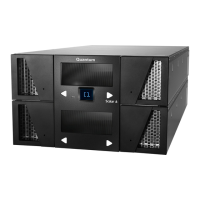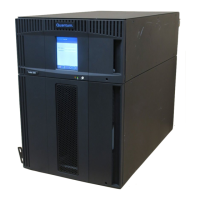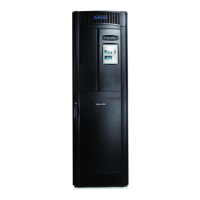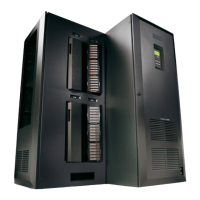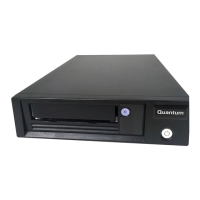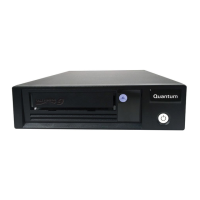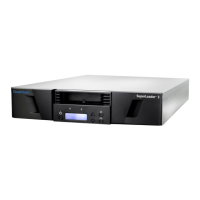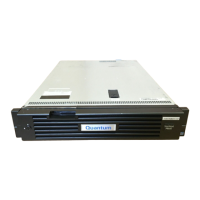Chapter 4: Configuring the Library
Working With Partitions
Quantum Scalar i40 and Scalar i80 User’s Guide 53
• Import/export (I/E) station slots are shared between all partitions.
Partitions take temporary ownership of I/E station slots performing
certain operations, such as importing and exporting cartridges.
Automatically Creating
Partitions
Automatic partitioning assigns available library resources
proportionately among the partitions, grouping tape drives according
to their interface type (Fibre Channel or SAS) and media generation
(LTO-4, LTO-5).
The library must contain at least one unassigned tape drive and one
unassigned slot to automatically create a partition. If no unassigned
tape drives or slots exist, you must modify or delete one or more
partitions to free up resources. For more information, see
Modifying
Partitions on page 56 and Deleting Partitions on page 57.
You can select the number of partitions to create. The maximum
number of partitions that you can create is equal to the number of tape
drives in the library that are not currently assigned to a partition. The
minimum number of partitions you can create automatically is the
number of unique tape drives — based on interface type (Fibre Channel
or SAS) and media generation (LTO-4, LTO-5) — not currently assigned
to a partition. For example, if your library contains two tape drives, a
Fibre Channel HP LTO-4 and a Fibre Channel HP LTO-5, two partitions is
the minimum because the tape drive generations are different.
You cannot mix tape drive interface types or media generations within a
partition when creating partitions automatically. If you wish to do so,
you must create the partition manually (see
Manually Creating Partitions
on page 54).
When the library automatically creates partitions, it assigns the first tape
drive in the partition as the control path. You can change the control
path at any time. See
Configuring Control Paths on page 67 more
information.
Before automatically creating partitions, verify that all tape drives are
unloaded and that all cartridges are in their appropriate storage slots.
For information on unloading tape drives, see
Unloading Tape Drives on
page 161.
